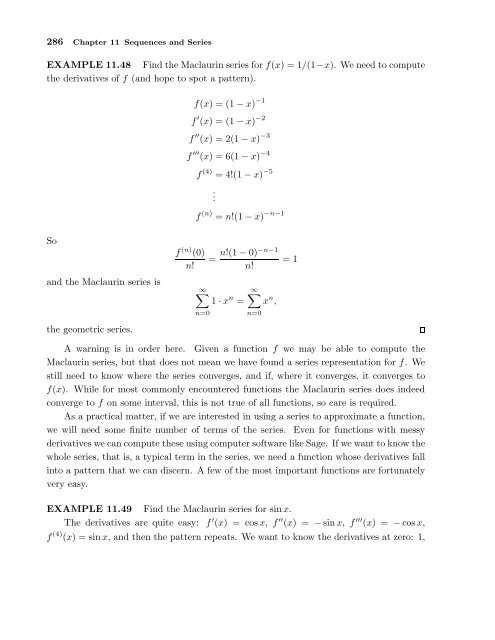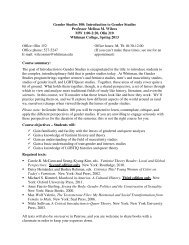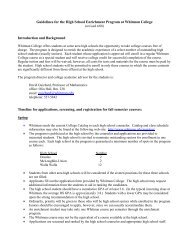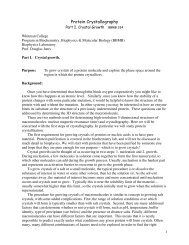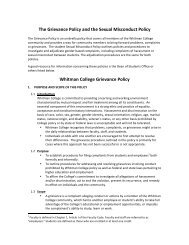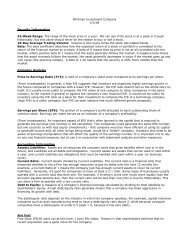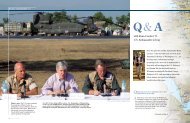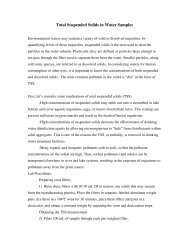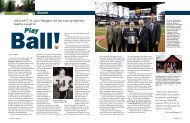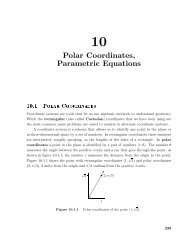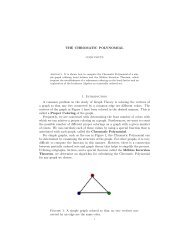Sequences and Series
Sequences and Series
Sequences and Series
Create successful ePaper yourself
Turn your PDF publications into a flip-book with our unique Google optimized e-Paper software.
286 Chapter 11 <strong>Sequences</strong> <strong>and</strong> <strong>Series</strong>EXAMPLE 11.48 Find the Maclaurin series for f(x) = 1/(1−x). We need to computethe derivatives of f (<strong>and</strong> hope to spot a pattern).f(x) = (1−x) −1f ′ (x) = (1−x) −2f ′′ (x) = 2(1−x) −3f ′′′ (x) = 6(1−x) −4f (4) = 4!(1−x) −5.f (n) = n!(1−x) −n−1So<strong>and</strong> the Maclaurin series isthe geometric series.f (n) (0)n!= n!(1−0)−n−1n!∞∑1·x n =n=0∞∑x n ,n=0= 1A warning is in order here. Given a function f we may be able to compute theMaclaurin series, but that does not mean we have found a series representation for f. Westill need to know where the series converges, <strong>and</strong> if, where it converges, it converges tof(x). While for most commonly encountered functions the Maclaurin series does indeedconverge to f on some interval, this is not true of all functions, so care is required.As a practical matter, if we are interested in using a series to approximate a function,we will need some finite number of terms of the series. Even for functions with messyderivativeswecancomputetheseusingcomputersoftwarelikeSage. Ifwewanttoknowthewhole series, that is, a typical term in the series, we need a function whose derivatives fallinto a pattern that we can discern. A few of the most important functions are fortunatelyvery easy.EXAMPLE 11.49 Find the Maclaurin series for sinx.The derivatives are quite easy: f ′ (x) = cosx, f ′′ (x) = −sinx, f ′′′ (x) = −cosx,f (4) (x) = sinx, <strong>and</strong> then the pattern repeats. We want to know the derivatives at zero: 1,


